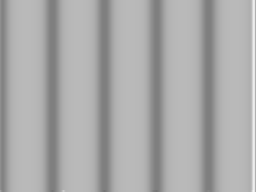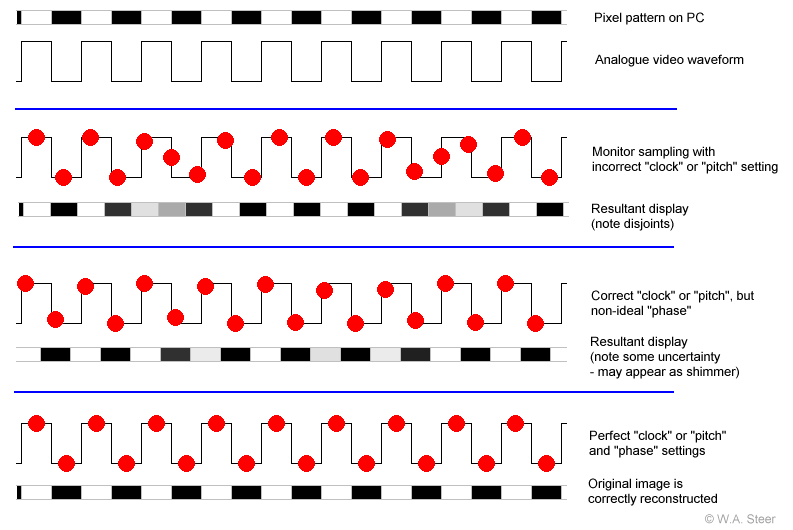
by W.A. Steer PhD

LCD monitors: Clock/Pitch and Phase controls for analog-input
LCD panels use discrete pixels, yet in an analog video signal the luminance data for one pixel runs into the next in a time continuum. To properly recover the data back into the correct discrete pixels requires accurate synchronisation (using a phase-locked loop or "PLL") of the "sampling-clock" signal in the monitor to the "pixel clock" in the graphics card. This can be technically tricky to get right. The "automatic" adjustment of many LCD monitors is not always successful, and manual tweaking may be needed. It is probably wise to allow the monitor (and PC) to warm up for 5- or 10minutes before running this test.
Using the test-screen above, you are likely to see the following effects:
 |  |
| (a) Clock/Pitch incorrect | (b) Phase incorrect (Clock/Pitch okay) |
The method to set up your monitor is to firstly adjust the Clock/Pitch control until no vertical dark bands (figure a) are seen, then to adjust the Phase control to eliminate (or minimise) horizontal streaking.
Clock/Pitch and Phase controls - explanation of resampling

Figure: Illustration of the re-sampling of the video signal by an analog-input LCD monitor.
The horizontal axis is time (equivalent to horizontal position across the display), and the red spots indicate time the moments when the monitor electronics "samples" the signal.
Return to LCD monitor main page
Created: November 2004
Last modified: 21 November 2004
Source: http://www.techmind.org/lcd/phasexplan.html
©2004 William Andrew Steer
andrew@techmind.org
![]()
![]()


